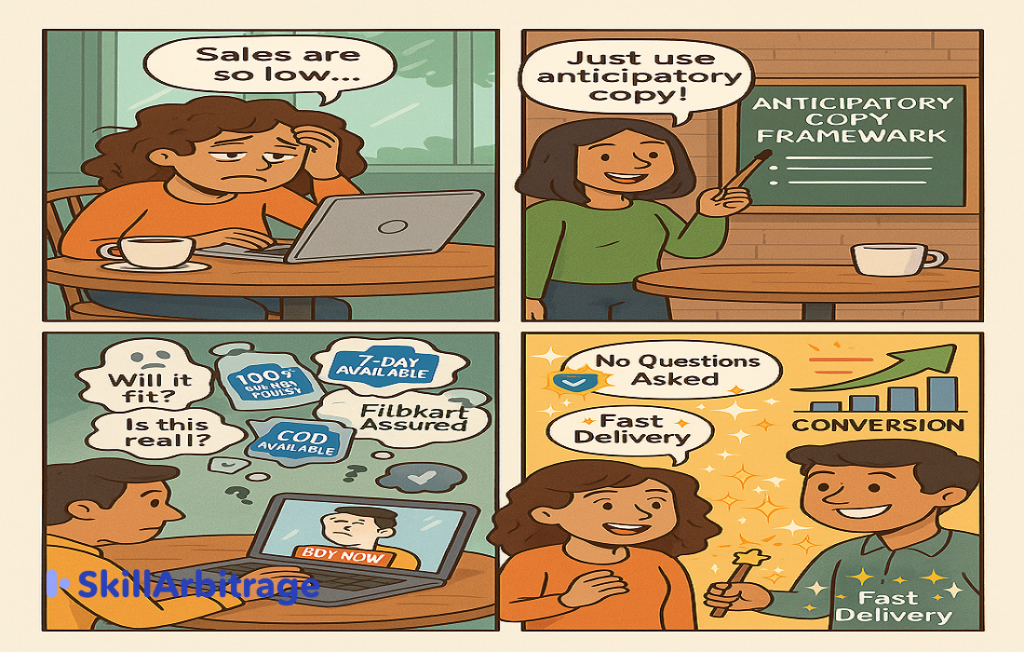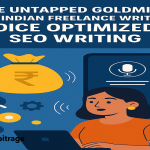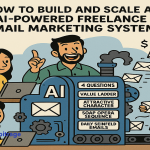This blog is a beginner’s guide to writing anticipatory copy for e-commerce brands. It would be useful for content marketers, specialists, and brand managers with e-commerce clients who want to know how to use anticipatory copy to dispel doubts.
Table of Contents
Introduction
“You want to know something crazy happening at work?”
A fellow content writer, Nisha, exploded over the phone.
“Are you alright?” Slightly concerned, I asked.
Nisha had recently joined an e-commerce brand. The last time we connected she seemed excited and happy. Now, however, she sounded on the edge.
“Not really! We launched this new website and well…a lot of people are visiting…but sales are so low…if this carries on, I would have to leave my job or they will probably kick me out!” She sounded on the verge of tears.
This sounded serious. We decided to meet at a small cafe we both liked.
The day was breezy offering slight relief from the dreadful humidity. The ambiance was just right and the coffee was perfect as usual. But none of these were enough to smooth Nisha’s worry wrinkles out.
She said, “I don’t know what’s happening, man. The products are good, the user experience smooth and the marketing excellent. People are visiting the website. We have been able to track that. But then…nothing!”
Something struck me at this point, “Are they abandoning the cart or leaving at the very last stage?” I asked.
“ Yes! Exactly! How did you know?” Nisha was clearly impressed.
“ They are having doubts, my dear Watson,” I replied.
We all suffer from the same doubts when making online purchases.
Imagine this:
You are reading a product description on Flipkart or Amazon.
You really like the product, it fits your needs. But something silently holds you back. Questions run through your mind:
“Will it arrive on time?”
“What if it doesn’t fit?”
“Can I trust this seller?”
In other words, you are assailed by doubts. I had a hunch the same was happening to the customers in Nisha’s case.
I explained to Nisha, “If the silent objections aren’t addressed before they become a deal-breaker, your copy just lost a sale.”
“But how do I do that? I am no psychic!” She said half laughingly.
“With an e-commerce brand, you need to be! At least as far as the doubt-assuaging part is concerned. Don’t worry, there’s a quick fix. All you have to do is use anticipatory copywriting.” I reassured her.
Anticipatory copywriting is the silent persuader that builds trust before doubt creeps in. It is the last nudge to finally drive a sale and a subtle essential technique without which most shopping carts on e-commerce platforms would lie empty.
It did not just improve conversion rates but was superb for SEO as well.
Me and Nisha had a long conversation about this, that summer evening, discussing the highs and lows, and the psychology behind the customer’s hesitation.
I also gave her a practical framework to craft anticipatory copy and some ready-to-use anticipatory copy lines, tailored for e-commerce campaigns.
Do you want to know how it went?
Read on.
“Anticipatory copy? Now what is that?” Nisha rolled her eyes.
It was a good question. I too, rolled up my imaginary sleeves and started to explain.
What is an anticipatory copy?
Anticipatory copy is a copy that addresses your audience’s questions, doubts, and objections before they voice them.
It’s proactive, not reactive.
Rather than waiting for a customer to wonder, “What if this doesn’t fit me?”, an apparel brand says:
“Not sure about the size? We’ve got a no-questions-asked 7-day return policy.”
“You read their mind and ease their hesitation. That’s what it’s all about. It’s crucial for e-commerce brands” I told Nisha.
There were valid reasons for this.
Millions of people in India shopped online and this number is projected to grow to 427 million by 2030.
But conversion rates remain low—around 2–3% for most e-commerce platforms.
A major reason for this?
Unaddressed objections.
Indian consumers were generally price-sensitive, and cautious. They ask:
- “Will I get scammed?”
- “Can I return this?”
- “Is this a genuine product?”
- “Will the delivery be late or damaged?”
If the copy doesn’t proactively answer these doubts, they don’t click.
“But why don’t they? Clearly they want the product if they have gone as far as to add it to their carts. Why abandon it then?” Nisha voiced her own doubts.
“Because the fear of loss is crippling to the human mind. No one likes to commit till they are reassured…the psychological factors far outweigh the desire or need for the product. But all this can be avoided with some standard responses” I replied.
The psychology behind objections and how to address it
To write anticipatory copy that works, you need to understand why people hesitate.
Here are 4 key psychological principles that cause objections—and how your copy can neutralize them:
1. Loss aversion
People fear losing money or making a bad purchase more than they desire the product’s benefits.
Address it with lines like:
“Not what you expected? Get 100% refund. No risk.”
2. Cognitive ease
Shoppers avoid decisions that feel complex or mentally taxing, preferring clear, simple information.
Navigate this by making the decision simple:
“Delivered in 24 hours. Track every step.”
3. Status quo bias
Customers stick to familiar choices unless reassured that a new option is safe and reliable.
Reassure them with lines like:
“Used by over 2 lakh customers in Mumbai alone.”
4. Trust bias
Shoppers favor brands that provide specific, trustworthy details over vague or unverified claims.
Use specifics to avoid vagueness:
“92% of buyers rated this size as ‘Perfect Fit’.”
“This is amazing! Is there a formula I can use to write these?” Nisha asked, her fear now giving way to excitement.
“Yes! There is.” I said.
A framework to write killer anticipatory copy
Here’s a 5-step framework tailored for Indian e-commerce writers:
Step 1: Identify the objections
List 3–5 common doubts about each product or service.
Examples of a fashion item on an online apparel brand like Myntra:
- Will it fit me?
- Is the color true to the photo?
- Can I return if I don’t like it?
Step 2: Flip objections into reassurances
Anticipate the doubts and flip them into reassurances by using phrases like “Worried about…? Don’t worry…”.
Step 3: Use specifics, not vague promises
Audiences can smell a fake promise a mile away and associate non-specificity with untrustworthiness.
Here are two examples of good and bad promises to earn customer trust.
| Objection | Good Reassurance | Bad Reassurance |
| Will it suit me? | Our products are thoughtfully designed to complement a wide range of Indian skin tones, ensuring a flattering fit for many. However, we understand that individual preferences vary. If you’re not completely satisfied with your purchase upon arrival, we offer a straightforward 5-day return policy—no questions asked. | High quality |
| Is the color the same as shown in the product picture? | We strive to ensure that every product closely matches its displayed image, with an accuracy of approximately 95%. However, please note that actual colors may vary slightly due to differences in device screen settings and lighting conditions. We make every effort to present our products as accurately as possible, but variations can occur. | Satisfaction guaranteed |
Step 4: Anchor in local context
Anticipatory copy for Indian brands is powerful when it speaks India’s language.
- Mention cities: “Next-day delivery in Bangalore”
- Reference local festivals: “Delivered before Diwali or full refund”
- Use INR pricing: “₹0 on returns. We cover everything.”
Step 5: Layer with visual triggers
Icons, checkmarks, and badges work great with the anticipatory copy.
Common examples are:
Free Returns | COD Available | Assured Quality
Here’s a snapshot of the whole process
You would have seen this framework at play, across many e-commerce brands. Here’s a look at some of them.
Real-world examples of anticipatory copy from Indian brands
Flipkart: delivery & trust
“Flipkart Assured. 100% Original Products. Fastest delivery across India.”
Why it works:
- Anticipates fear of fakes
- Uses authority (“Flipkart Assured”)
- Mentions speed without exaggeration
Nykaa: beauty returns
“Worried it won’t suit you? Easy 7-day return policy. No questions asked.”
Why it works:
- Hits the core doubt in the beauty category (suitability)
- Eases fear with a clear timeframe
- Friendly, non-threatening tone
Lenskart: eyewear trials
“Try at home for free. Pay only if you love it.”
Why it works:
- Removes risk of the wrong fit, a reasonable doubt when buying glasses online
- Psychological nudge: no pressure to buy
“You have really thought about this, haven’t you?.” Nisha asked.
“I have, haven’t you seen the article on Business Standard ?” I questioned.
She remembered it then. For those of you who didn’t spot it, here it is:
Clearly, no writer or marketer could afford to ignore the e-commerce industry. The skill arsenal was incomplete without learning how to write anticipatory copy.
I also made a glossary of lines that can be instantly used to write anticipatory copy.
10 powerful anticipatory copy lines you can plug & play
- “Worried about delivery delays? We guarantee it in 24 hours—or your money back.”
- “Not sure about the fit? Enjoy easy returns with free reverse pickup.”
- “Seen it cheaper? We match the lowest price, always.”
- “This product is 100% genuine. Assured with brand warranty.”
- “Your payment is secure. 128-bit encryption + trusted Indian gateways.”
- “Running out? We auto-remind you before stock finishes.”
- “Not what you expected? Instant refund to your account within 48 hours.”
- “Track your delivery at every step—real-time, transparent, and secure.”
- “More than 50,000 Indians trust us. You’re in good company.”
- “No jargon. No hidden fees. You pay what you see.”
Nisha was writing them down on her phone. Now, she looked up and said “But we can’t use them everywhere, right?”
“No, we had to use them only when the customer starts to feel doubt. There are some specific places where anticipatory copy works best. ” I answered.
Where to use the anticipatory copy in the buyer journey
| Funnel stage | Where to insert | Example |
| Product Detail Page | Below CTA / Highlights | “Don’t worry about fit—7-day return window” |
| Cart Page | Beside checkout | “All orders protected by buyer guarantee” |
| Email Confirmation | Footer / Headline | “Need help? 24×7 support on WhatsApp” |
| Retargeting Ads | Body copy | “Changed your mind? Free cancellations anytime” |
| Exit Pop-Ups | Overlay | “Still unsure? Try it, return free if it doesn’t fit.” |
Anticipatory copy isn’t just for product pages. Here’s where to deploy it for maximum impact.
Why Indian content writers must master anticipatory copy
In India’s crowded digital market, where mistrust runs high and options are endless, anticipatory copy becomes your sharpest weapon.
You’re not just writing product blurbs.
You’re dissolving doubts. You’re breaking hesitation. You’re turning skeptics into believers.
Learn this, and Indian e-commerce brands won’t just want you.
They’ll need you.
Ready to preempt doubts before they derail conversions?
Try writing anticipatory copy for your favorite Indian product page and share it in the comments. Let’s co-create a doubt-free India, one product page at a time.
FAQs
1. How can I identify the most common objections my customers have before they abandon their carts?
Utilize tools like heatmaps, session recordings, and exit-intent surveys to observe where users hesitate or drop off. Analyzing customer reviews and support tickets can also reveal recurring concerns..
2. Can anticipatory copy be effective for low-cost items, or is it only beneficial for high-ticket products?
Absolutely. Even for low-cost items, addressing common concerns like shipping times, return policies, or product authenticity can reduce friction and increase conversions.
3. How do I balance creating urgency without seeming manipulative in my copy?
Focus on genuine scarcity or time-sensitive offers. Use transparent language like “Limited stock available due to high demand” instead of vague statements like “Hurry, offer ends soon.”
4. What role does social proof play in anticipatory copy?
Social proof, such as customer testimonials or user-generated content, can preempt doubts by showcasing real experiences, thereby reinforcing trust and credibility.
5. How can I test the effectiveness of my anticipatory copy?
Implement A/B testing to compare versions of your copy. Monitor metrics like conversion rates, bounce rates, and time on page to assess performance.
6. Should an anticipatory copy be placed above or below the fold on a webpage?
Key anticipatory messages addressing primary objections should be placed above the fold to immediately reassure visitors. Additional details can be provided further down the page.
7. What are some common mistakes to avoid when writing anticipatory copy?
Avoid overloading the copy with too much information, which can overwhelm readers. Steer clear of making assumptions about customer concerns without data to back them up.
8. What are the future trends in anticipatory copywriting for e-commerce?
Emerging trends include the integration of AI to analyze customer behavior and predict objections, enabling real-time personalization of copy. Additionally, interactive content that adapts based on user input is gaining traction.
9. What free AI tools can assist in writing anticipatory copy for e-commerce brands?
Tools like Copy.ai and HubSpot’s AI Email Generator offer free versions that can help generate product descriptions, emails, and other marketing materials that address customer objections effectively.HubSpot+1Copy.ai+1
10. How can I ensure my anticipatory copy aligns with my brand voice?
Develop a clear brand voice guideline and use it as a reference when crafting copy. Consistency in tone, language, and messaging helps maintain brand integrity while addressing customer concerns.







 Allow notifications
Allow notifications
